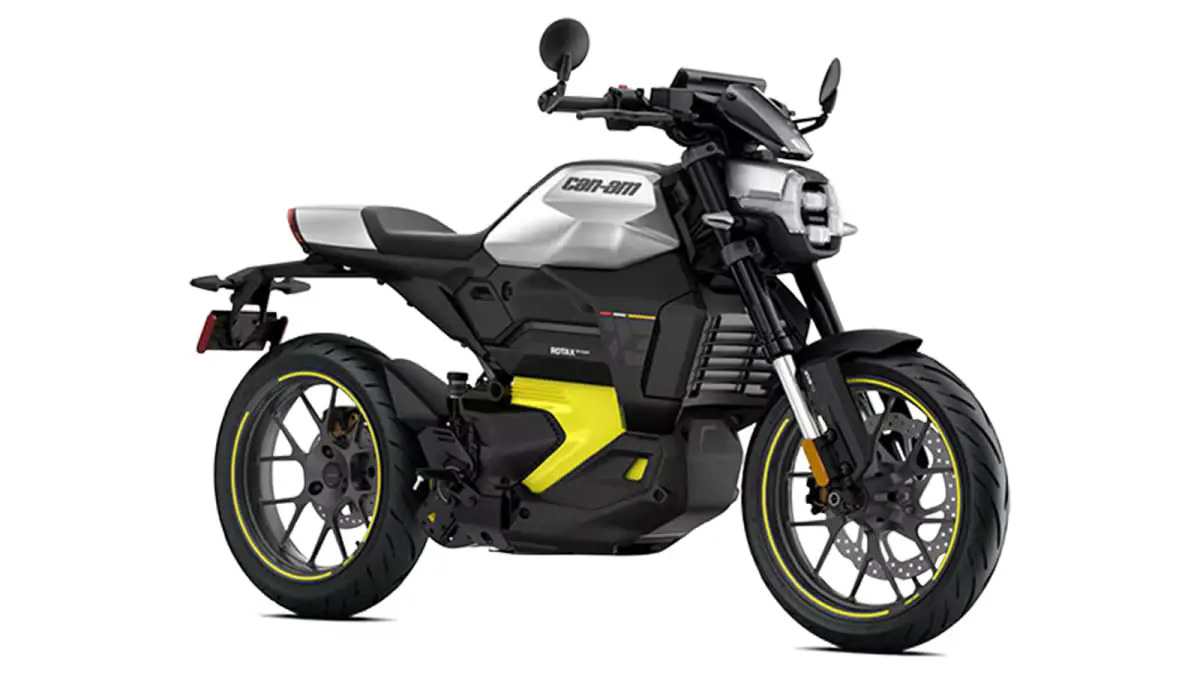News
The Pulse is the street version, and the Origin is the adventure bike
Two years after Can-Am announced it would re-enter the motorcycle business with fully electric bikes, it has revealed the specs and pricing on its first entrants: the Pulse and the Origin. They look virtually identical to the concept bikes of the same names, and are positioned closely to the LiveWire S2 and the Zero Motorcycles FX lines.
Both bikes share most of the basics. They each get the same powertrain, which includes a Rotax electric motor making 47 horsepower and 53 pound-feet of torque. It’s integrated into the combination swing-arm and enclosed chain case. The enclosed chain case contains oil and an automatic tensioner, drastically reducing chain maintenance. Like most EVs, the powertrain is a single-speed. On the Pulse street bike, which weighs in at 390 pounds dry, the motor will get the bike to 60 in 3.8 seconds. The Origin adventure bike, weighing 413 pounds dry, will do the same in 4.3 seconds.
Powering both bikes is an 8.9-kWh battery pack mounted within the frame and occupying the space normally used for both an engine and fuel tank. It only supports Level 1 and Level 2 AC charging, with the latter filling up the bike from 20% to 80% in 50 minutes. That’s quicker than either a Zero FX or a LiveWire S2, though the latter does have a larger battery pack.
Range isn’t especially impressive on either bike, but still comparable to the aforementioned competition. The Origin has a claimed city range of 100 miles, and 80 in combined riding. LiveWire claims 113 miles in the city on the S2 Del Mar, and 86 miles in combined riding. The Zero FX bikes don’t have a combined riding rating, but they’re both just over 100 miles in city riding.
Where the Pulse and Origin obviously differ is in styling and chassis. The Pulse is very road-oriented and has a lower seat height of 30.9 inches. It looks chunky and sporty, and has 17-inch wheels. Up front is an upside-down non-adjustable fork and a single coilover rear shock with adjustable preload, and travel is 5.5 inches. The Origin sits significantly higher with a seat height of 34 inches, and 10 inches of suspension travel. The suspension layout is basically the same, but in addition to the extra travel, it also gets adjustable compression and damping settings on the rear shock. It also gets larger wheels, an 18-inch rear and an 21-inch front, both wrapped in knobbier tires.
Both bikes also get a decent bit of technology. They’re each fitted with enormous 10.25-inch touchscreens for instruments and infotainment. Bluetooth connectivity and Apple CarPlay are included, and each bike has a USB charger in the glove compartment where you’d normally find a gas tank. ABS and traction control are standard, along with different riding modes. The Origin gets exclusive off-road modes.
Between the Pulse and the Origin, the Pulse is more affordable. It starts at $13,999 (before destination, and Can-Am doesn’t list destination) for the base model, available in either white or black, and the ’73 trim starts at $15,999. That version comes with extra stickers, a silver paint scheme and LED accent lights. The Origin starts at $14,499 with the same white and black color options, and the ’73, again with the same extras as the Pulse, starts at $16,499. For comparison, the LiveWire S2 starts at $15,499 for the Del Mar, and the Zero FX starts at $12,495 (though that crosses the $13,000 mark when adding the faster Level 2 charger).
Can-Am is taking orders for the Pulse and Origin now. Production will start later this year, and deliveries will start early next year.











